The Apple iPad Review (2012)
by Vivek Gowri & Anand Lal Shimpi on March 28, 2012 3:14 PM ESTA5X vs. Tegra 3 in the Real World
Even with the inclusion of GLBenchmark data, we're still arguing over theoretical advantages. Any 3D game developed for Android or iOS is going to target 30 or 60 fps and try its best to stay there. Similar to a console, on an Android or iOS tablet there's no disabling vsync and there's (almost) no tinkering with image quality settings to impact performance. The trick on Android is really ensuring that experience across all available SoCs, but if we cull the list down to the best of the best—chances are you'll have a good experience on both sides of the fence.
NVIDIA's Tegra 3 is at the heart of our current favorite in the Android tablet space: ASUS' Transformer Prime. There also happen to be some games that are available on both Android and iOS. Take Modern Combat 3, available on both iOS and Android—do we see the same ~2x performance advantage from Egypt in this title compared to ASUS' TF Prime?
NVIDIA makes two counter arguments against Apple's claim that the A5X delivers superior gaming performance. The first is that despite any theoretical performance advantages the A5X may hold, they don't manifest in games today. The second NVIDIA argument is that via Tegra Zone, Android titles can look better than their iOS counterpart. Both of these are potentially valid claims, but let's test them.
Shadowgun is an NVIDIA favorite. It's a first person shooter that's available via NVIDIA's Tegra Zone app. The Tegra specific version offers support for gamepads and stereoscopic 3D with enhanced graphics specifically for Tegra 2 and Tegra 3. It works for our little experiment here because it's also available on iOS.
Shadowgun also ends up being a great example of what the Android/iOS divide looks like for many Tegra Zone games. This particular title appears to still render at 1024 x 768 on the new iPad, we simply get an upscaled image rather than a higher resolution. In turn it means we get more aliasing and a less sharp image compared to what we get on ASUS' Transformer Prime, where the game runs at 1280 x 800.
Apple's A5X delivers an extremely smooth frame rate in Shadowgun. Although there's no built in timedemo, frame counter or benchmark functionality, the game runs subjectively smoother on iOS compared to on the TF Prime running Ice Cream Sandwich. Although the frame rate is higher on the iPad, I wouldn't consider it unacceptably low on the TF Prime—both are definitely playable.
Where the Tegra Zone version of the game has an advantage is in its visuals. The NVIDIA enhanced version uses higher resolution textures and features what appears to be CPU accelerated cloth physics in objects that simply don't exist in the iOS version. Some scenes also include other additional details (e.g. water on the floor) that aren't present in the iOS version. None of these additions fundamentally change the gameplay at all, but they do make for a better looking game.
Is it physically possible to have the same experience on iOS? Quite possibly. What we're seeing here is a mobile representation of what NVIDIA has done in the PC industry for years. By lending its support to smaller Android developers, their games are made prettier on NVIDIA hardware, and in turn NVIDIA helps promote those games via Tegra Zone and other channels. Obviously Apple could do the same, but thus far it hasn't needed to. Apple instead prefers giving its partners what someone very smart once referred to as most favored nation status. As a MFN, these game developers get additional exposure in the app store and elsewhere in Apple's promotions. It's very similar to what NVIDIA is doing, except on a much larger scale and without the iOS specific visual enhancements.
The comparison becomes even more complicated when you take into account the iPad's Retina Display looks better than the panel on the TF Prime. It's not really the higher resolution but rather the improved color reproduction on the iPad.
Riptide GP is another example of a Tegra Zone title available on both iOS and Android, although here the Tegra optimizations are less impressive while the Retina Display's advantages are more pronounced. There's no perceivable difference in frame rate here either, making it a much closer call:
Grand Theft Auto 3 was recently ported to both Android and iOS, and with this title we find ourselves in a unique position: the Android version offers customizable visual quality. The iPad version of the title renders at 1024 x 768 regardless of hardware generation and performance is understandably smooth. Visual quality is configurable, only on the Android version, with draw distance, screen resolution and effects quality vectors:
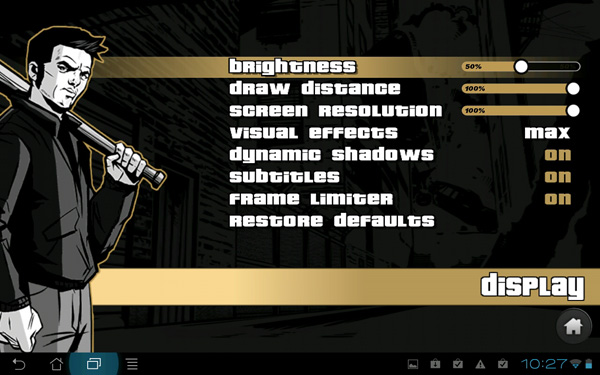
These sliders/options have different defaults depending on what SoC they are running on. The Transformer Prime is capable of running GTA3 at the highest quality settings with a tangible but livable drop in frame rate. The end result is a significantly better looking game on Android, although to be honest it's something that you really only notice if you are doing a side by side comparison. If all you have is an iPad or TF Prime, you'd likely just grow used to whatever platform you had.
The TF Prime experience doesn't map as well to other tablets unfortunately. While playing GTA 3 on a Xyboard 10.1 (OMAP 4430) even at its default settings of 50% draw distance, 60% resolution and low effects quality, there's unusual stuttering during gameplay. The frame rate is otherwise smooth, but the periods of stutter significantly impact the overall experience.
Unfortunately the Android vs. iOS gaming comparison isn't always this easy. While some apps won't run on older Apple hardware, there are only three generations of iPad to worry about. Furthermore, within a single generation there aren't multiple performance levels to worry about as Apple only offers a single SoC. By comparison, there's a far larger selection of Android devices. Simply having the latest and greatest hardware isn't a guarantee that you'll be able to play every game in the Google Play store. Take Modern Combat 3 for example. Modern Combat 3 is a Call of Duty clone available on both iOS and Android. The game won't install on an ASUS Transformer Prime or a Motorola Xyboard 10.1:
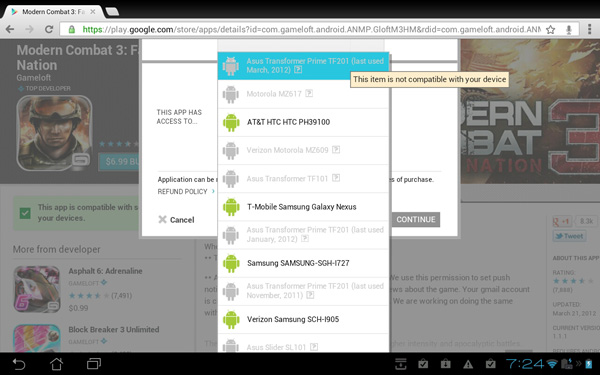
The Play store keeps track of all of the devices I've used with my Google account and the compatibility list doesn't look good. Obviously this isn't Google's fault directly as the responsibility falls upon the game developer to ensure broad platform compatibility, but it is a problem for anyone who purchases a flagship Android device like the Transformer Prime. Either Google has to enforce compatibility across all of its devices or it needs to at least force developers to support a single, flagship platform. Perhaps one reason I'm seeing this today is because there is no Nexus tablet yet. If that's the route Google is going to count on, the first iteration of any major platform needs to be a Nexus device. In other words, the Transformer Prime should have been a Nexus to begin with.


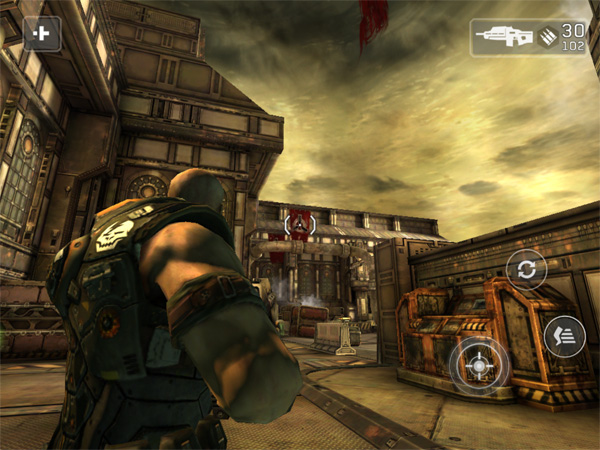







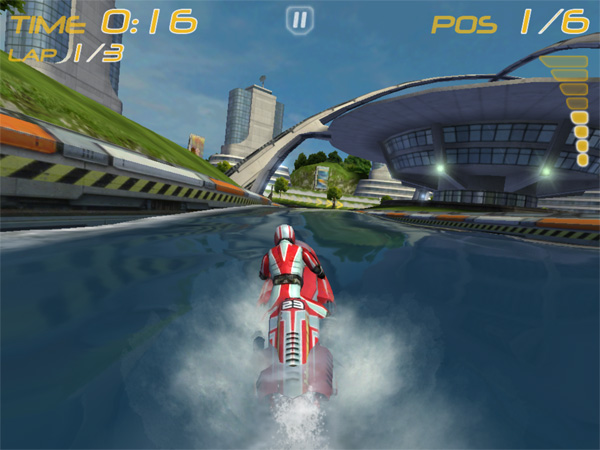
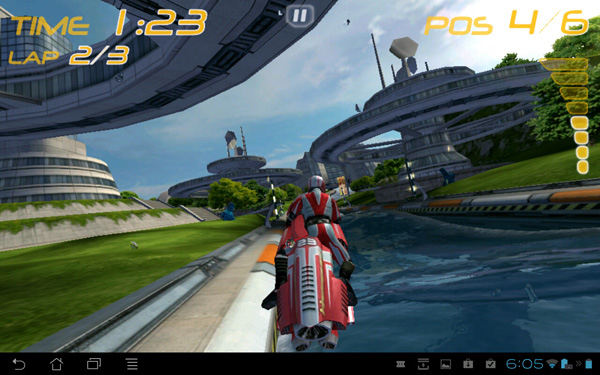
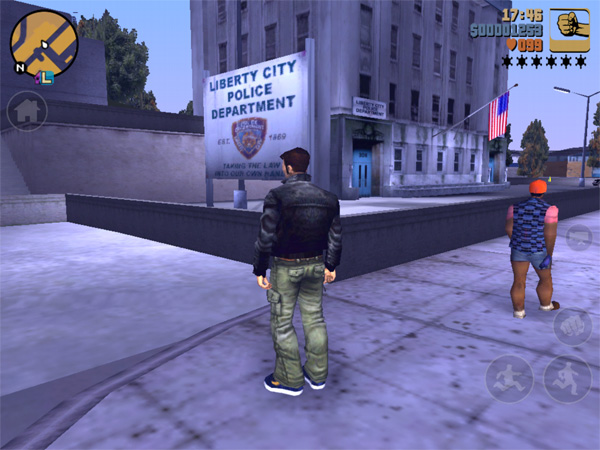















234 Comments
View All Comments
Anand Lal Shimpi - Thursday, March 29, 2012 - link
Max brightness.Take care,
Anand
h4stur - Thursday, March 29, 2012 - link
I use it every day. But it don't see enough improvement in the new version, to warrant an upgrade. I view the high ress as an actual downgrade. As the machine will have to upscale the majority of the content.mavere - Thursday, March 29, 2012 - link
text text text text.If that means nothing to you, then the upgrade won't do anything for you. For the rest of us, this screen is a godsend.
darkcrayon - Thursday, March 29, 2012 - link
I'm guessing the machine will have to upscale very little content other than images on the web in a month or two. Every major app will be updated for the higher resolution, no new app will be caught dead not supporting the new resolution, and text based apps get a "free" upgrade to the higher resolution. If your primary concern is whether images on the web will be updated, then that's an area for disappointment. Otherwise...adityarjun - Thursday, March 29, 2012 - link
I love this site and most of the reviews. Since the ipad has been released I have been coming here 6-7 times a day just for this review. Glad to see it finally put up. I just registered here specifically to ask a few questions.While I was more than impressed with the review, I was hoping to read something about the use of Ipad as an educational tool. This section was sadly missing.
I am a engg grad student and I am currently looking for a good pdf reader. The only viable options for me are the new Ipad or the Kindle DX (the kindle 6" is too small). While the Kindle does sound good , the problem is that some of my pdf books are over 100mb and full of mechanical drawings. Will the Kindle be able to handle that, especially if i want to frequently jump pages or refer to multiple books side by side? I have never seen a Kindle in person so anyone who has used it, please comment.
Reading ebooks on my laptop is a pain. I often read through the night and that is not possible for me to do on a laptop. The vertical height is too small and I often end up turning the laptop 90 degree to read. Not to mention, carrying around a laptop in your hand is impossible for long durations. Plus the zoom options on Adobe reader are just weird. In short, I am really uncomfortable reading on a laptop. I have tried both a 14" 1366*768 screen as well as 17" 1920*1080 screen
On the other hand, ipad gives me the advantage of iOS. I will also be able to see OCW videos on the ipad as well as watch my college slides (ppt). Ipad owners please comment-- can i play .avi or real media player file on it directly or through an app? I can also use the educational apps like Khan academy plus it can serve as a note taking device. The disadvantage of the ipad is that reading on it through the night will probably leave me blind in a year or so. I have myopia and my power is -8D. That is one BIG disadvantage, or so I have read. I have never used an ipad so perhaps someone who uses it can share their experience of reading on it for hours at a stretch.
I am really confused about this so I hope the collective intelligence of this site will help me make an informed decision. And I would really like to see a page in the reviews of tablets that talk about the reading and note talking abilities and the educational purposes they can serve.
Monobazus - Thursday, March 29, 2012 - link
I understand your desilusion with the ommission here of any specific discussion of the advantages or desadvantages of using the iPad as a book reader. After all, that may probably be one of the main usages of the iPad, apart from browsing the web or checking the email or Facebook posts. But anandtech.com is mainly a tech site for geeks and technically oriented people, and we must understand that putting a special emphasis on specs and speeds is more interesting for the majority of its readers. For an analysis of your question, you could perhaps go into one of the various sites that deal with ebook readers. Unfortunately most of them, as far as I can tell, have not the level of expertise or care that anantech.com has in its analysis (see http://www.the-ebook-reader.com/ipad-3.html as an example).Now to your questions. I have no direct experience with the new iPad or the kindle DX. I have an iPad 1 and a kindle 3 (the one with the 6" screen and no touch controls). I haven't seen yet the new retina display of the iPad, but from what I've been reading it's much better on text than the previous editions. I doubt however that it is as good for the eyes as the eInk screens are - these are reflective and, as such, closer to paper than LCD screens. From my experience - I'm an intensive reader and use glasses, due to my advanced age - eInk screens don't put as much stress on the eyes as the emissive screens do. If you are planning to read through the night with a LCD screen use an indirect ambient light and plan for frequent periods of rest.
On the other hand, handling pdfs on the Kindle is an awful experience. A DX is certainly better than a 6" one, no doubt, because the bigger screen allows for larger type. On a 6" screen you can forget pdfs. You can't read them. If your typical pdfs can be accommodated in a 9,7" screen without zooming, then a DX can be the eReader for you. But be careful with the illustrations: I think the DX has the same controls that the 6" non-touch kindle. If that's the case be prepared for a bad experience with the illustrations, specially if they are detailed and need zooming (or if they have colour). The DX is a non-touch machine. The iPad touch controls are much better.
You can't see two documents side by side on any of these readers: not on the iPad and not on the Kindle. For that you need a laptop. On the iPad you can use a trick: open one document in one app (say, on the eBook app) and the other in other app (say, on the kindle reader). By switching rapidly between them, you can see the two documents in rapid succession. You can't do that on the Kindle. But this is a trick, a compromise, and not the same thing as looking to two documents side by side.
As to seeing ppt's and videos, the iPad is the way to go. There are apps for that. The kindle has not that capability.
In the end, my advice is this: try to get access to an iPad before buying, and see if it meets your expectations for reading clarity and comfort. Getting access to a DX before buying may be more difficult, because there are few people around with them. I have yet to see one and they are around for several years.
I'm sorry if these considerations haven't been useful for you.
Monobazus - Thursday, March 29, 2012 - link
See this YouTube analysis of the Kindle DX with pdf's: http://www.youtube.com/watch?v=bVPBCD0GgBw&fea...adityarjun - Thursday, March 29, 2012 - link
Thanks you very much for your reply.It does seem as if neither of the two fit my needs perfectly. So I will have to make a compromise.
A 6" kindle or 7" tablet is out the question. It is just too small to read comfortably on.
The Kindle DX's screen and size seemed good to me but if you say that it can't handle pdfs comfortably then it is of no use to me. I will not be viewing any newspapers or magazines nor will I be surfing the net with it.
The only other option that remains is to use the ipad. The pros is that it should be able to handle large pdf *as per videos on youtube* as well as all my videos.
The con is the eye strain.
Is it really as bad as some sites make it out to be? Especially when compared to an e ink reader?
I will try to get my hands on an ipad and use it for a day or two but come to think of it, the screen cant be that much more stressful than a normal laptop, can it? And I have been reading reviews of the SoCs on Anandtech since morning...
Damn, I am really gonna go blind at this rate. *summons immense willpower and tries to close anandtech* * fails :-) *
mr_ripley - Thursday, March 29, 2012 - link
I keep and read all my technical pdf files on the ipad (textbooks, reports, memos, drawings, etc). I use an app called GoodReader which is absolutely amazing with all kinds of pdfs.Regarding eye strain, I usually keep my brightness setting at around 50% and zoom in to make the font large, which strains my eyes a little less and definitely less than a desktop screen. The sharp font on the new retina screen helps as well. That said I will admit it is not as easy on the eyes as an e-ink display.
tbutler - Thursday, March 29, 2012 - link
Honestly? I think the iPad's screen (even the first iPad, let alone the new one) gives me significantly *less* eyestrain than eInk, and I've owned a couple of Sony eInk readers.For me, the key eyestrain issue between the two is contrast. eInk displays are a light grey background with dark grey text, and in bright lighting the contrast is fine. But in less than bright lighting - for example, an indoor room without either a ceiling light fixture or multiple floor lamps - I start having trouble with distinguishing the text. Even a 40-year-old yellowing paperback is easier for me to read under those conditions. While you can use a clip-on reading light, I find that both clunky and less effective than it would be on paper.
The iPad (and really, any backlit LCD screen) has the 'stare into backlight' issue; but honestly, this is rarely a problem for me, and in particular it's much less of a problem than eInk contrast issues. Backlit color LCDs also wash out in bright sunlight, but not in even the most brightly-lit interior room, in my experience - however, for me this isn't a significant issue, since I spend much more time reading indoors than outdoors.
So just in terms of legibility, I'd pick the iPad (or the nook Color/Tablet) over any of the eInk readers I've used. And that's leaving out issues of software and PDF handling.